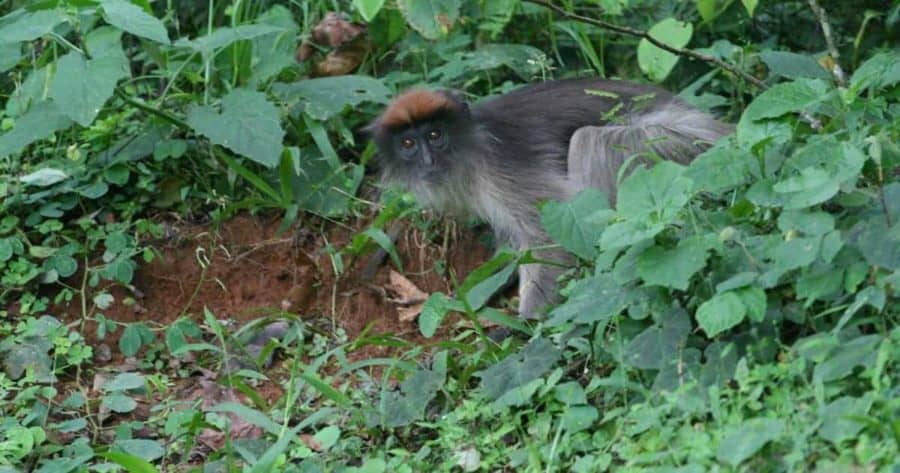Primate feces could be a valuable key to determining exposure to frequently used chemicals, giving scientists a better understanding of the threat to wildlife from chemical pollutants, even in remote locations, according to new research from Indiana University.
The study, “Feces Are Effective Biological Samples for Measuring Pesticides and Flame Retardants in Primates,” was co-authored by O’Neill School of Public and Environmental Affairs assistant professor Marta Venier and postdoctoral associate Shaorui Wang, along with graduate student Tessa Steiniche and assistant professor Michael Wasserman in the College of Arts and Sciences’ Department of Anthropology, among other collaborators from the U.S., Uganda and Costa Rica.
Scientists collected fecal samples from captive baboons in the United States, wild howler monkeys in Costa Rica, and baboons, chimpanzees, red-tailed monkeys and red colobuses in Uganda. They then tested each sample for the presence of over 100 pesticides and flame retardants, and their metabolites. Biomonitoring is a critical tool, especially in areas where increasing agricultural and industrial chemical pollutants pose significant toxicological threats.
“The majority of primate species today are threatened with extinction due to a number of factors,” Wasserman said. “Much research has explored the effects of habitat loss, forest fragmentation, logging and bushmeat hunting, but surprisingly little research has been conducted on the effects of pollution. It is exciting that we now have a new tool to noninvasively study primates’ exposure to over 100 different anthropogenic chemicals. Hopefully this research will help conservation managers reduce the threat posed by some of these chemicals.”
Using fecal matter as a means of assessing environmental contamination that could impact humans provides a valuable warning signal, the researchers argue. Because humans and primates share a recent common ancestry, with many similarities in physiology and some dietary overlap, nonhuman primates can serve as important sentinels for humans. If primates are exposed to chemical pollutants, the risk of human exposure is likely present for neighboring communities as well.
Few studies have used feces for toxicant analysis, the researchers said, especially with primates or other tropical-dwelling animals.
“We were surprised to find a number of chemicals from legacy to emerging pollutants in the feces of primates, including those living in more remote regions,” Venier said. “This study shows that fecal matter can be used globally to examine the overlooked threat of chemical contamination in wildlife, especially in primates and other protected species.”
Higher chemical concentrations were found in feces from red colobuses, which consume mostly leaves and occasionally soil, and red-tailed monkeys, which consume large amounts of fruits and occasionally raid crops. This suggests that dietary sources such as crops, soil, or wild leaves and fruits can shed light into exposure risks. However, chimpanzees, baboons and howler monkeys also consume similar dietary items.
Researchers have plans to expand this study. “We would like to further understand differences in chemical exposure by examining potential sources, like diet, as well as various phylogenetic traits, including body size, and ecological factors, such as forest coverage, that may influence chemical exposure, excretion patterns and toxicity,” Steiniche said.
If our reporting has informed or inspired you, please consider making a donation. Every contribution, no matter the size, empowers us to continue delivering accurate, engaging, and trustworthy science and medical news. Independent journalism requires time, effort, and resources—your support ensures we can keep uncovering the stories that matter most to you.
Join us in making knowledge accessible and impactful. Thank you for standing with us!

